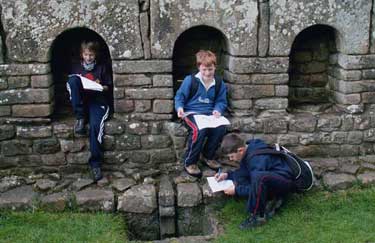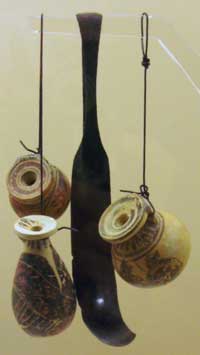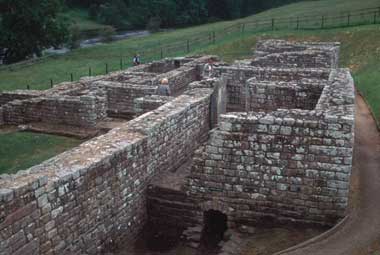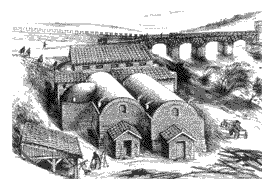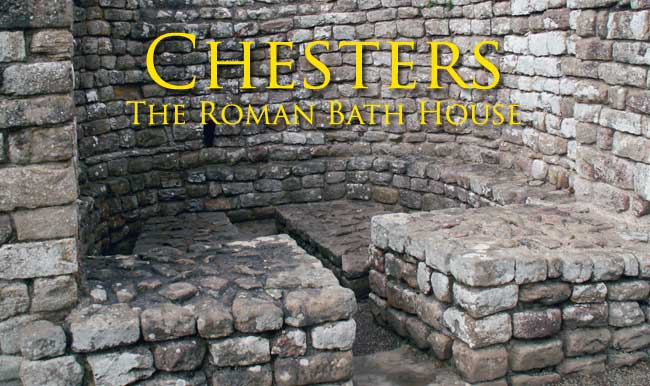To the Romans, public bathhouses (balneae) were an essential part of civilized life and all Roman towns and outposts were provided with them. Typically, there were both steam baths and dry heat baths similar to a modern sauna.
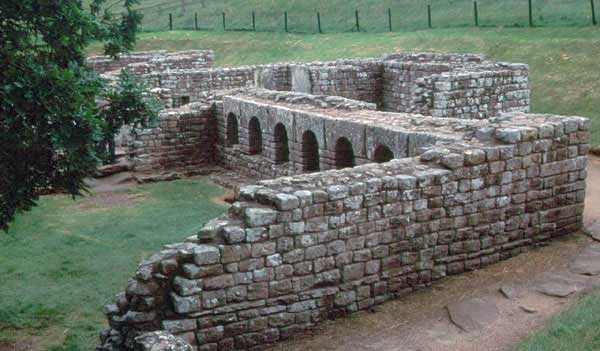
Chesters Bath House. The Apodyterium
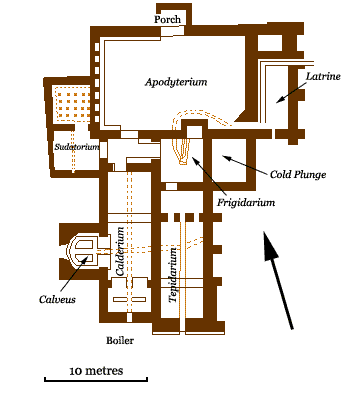 Entry was through a changing room, the apodyterium, where the bather stripped and left his clothes. At Chesters, there were seven niches in the end wall where any belongings could be laid. There was a lavatory at the opposite end, which patrons were encouraged to use before proceeding further.
Entry was through a changing room, the apodyterium, where the bather stripped and left his clothes. At Chesters, there were seven niches in the end wall where any belongings could be laid. There was a lavatory at the opposite end, which patrons were encouraged to use before proceeding further.
They next passed through the tepidarium, filled with warm steam, and on to the hot room, the caldarium, heated by two bronze boilers. These circulated steam underneath the floor and up through ducts in the walls as well as providing hot water for the small apsidal plunge bath, the calveus. The ceilings of the steam rooms were vaulted in order to reduce the amount of condensation that collected on them.
The Romans did not have soap and so they first rubbed themselves with oil to loosen the grime and then scraped it off with a curved metal instrument known as a strigil. Usually this was done in the tepidarium. In town, the oiling and scraping would have been done by a slave or by an attendant at the baths but in the military they presumably did turn about with one another.
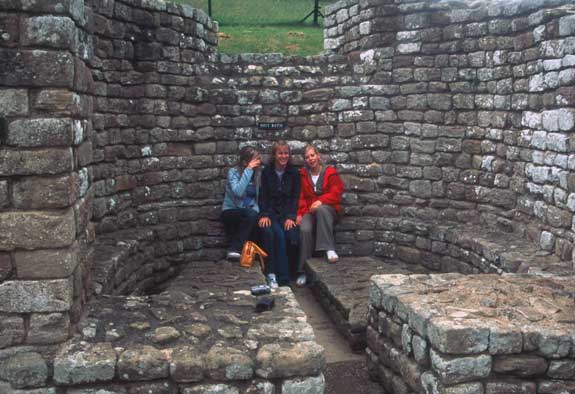
The Hot Plunge Bath (Calveus)
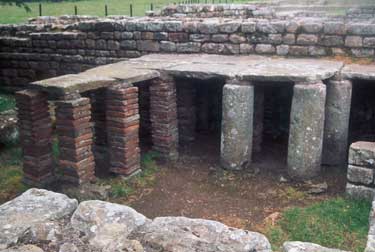 Next they proceeded to the caldarium, normally kept at a temperature of about 40 degrees Celsius, for a relaxing steam bath or to relax in the hot tub. Alternatively, they could opt for the hot, dry room (sudatorium) to raise a sweat. They might then spend some more time in the tepidarium before finishing in the cold room, the frigidarium, with a dip in the cold pool to close the pores.
Next they proceeded to the caldarium, normally kept at a temperature of about 40 degrees Celsius, for a relaxing steam bath or to relax in the hot tub. Alternatively, they could opt for the hot, dry room (sudatorium) to raise a sweat. They might then spend some more time in the tepidarium before finishing in the cold room, the frigidarium, with a dip in the cold pool to close the pores.
The Romans developed and ingenious system to heat the baths—the hypocaust (left). It involved raising the floor by pillars which left plenty of room for hot air from an external furnace, the praefurnium, to circulate. In short, Roman engineers had developed an amazingly sophisticated apparatus, far superior to anything found in the region until the twentieth century.

